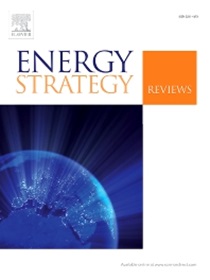Dust mitigation methods and multi-criteria decision-making cleaning strategies for photovoltaic systems: Advances, challenges, and future directions
IF 7.9
2区 工程技术
Q1 ENERGY & FUELS
引用次数: 0
Abstract
This review consolidates four decades of research (1983–2024) on dust mitigation for photovoltaic systems, categorizing strategies into four key areas: preventive measures, dust monitoring systems, active cleaning methods, and multi-criteria decision-making strategies for cleaning schedules. A systematic content analysis was employed to critically evaluate methodologies, findings, and emerging trends. Preventive measures, notably super-hydrophobic coatings, can reduce dust accumulation by up to 50 %. However, integrating monitoring systems remains complex. The review highlights the potential of hybrid cleaning methods combining manual, mechanical, electromechanical, and electrostatic approaches to balance their benefits and limitations for higher efficiency and practicality. It also emphasizes a shift from fixed-interval cleaning schedules to dynamic, AI-driven decisions based on real-time data, potentially reducing the levelized cost of energy by 8 % for large-scale photovoltaic plants and 4.3 % for smaller systems. Unmanned aerial vehicle-based cleaning methods are recognized as a promising future solution for large-scale photovoltaic systems. The review identifies critical research gaps and provides recommendations for advancing dust mitigation technologies and optimizing photovoltaic cleaning and maintenance strategies to minimize soiling effects. This comprehensive analysis aims to guide future research toward more sustainable and economically viable soil detection and mitigation systems as well as photovoltaic system management.

求助全文
约1分钟内获得全文
求助全文
来源期刊

Energy Strategy Reviews
Energy-Energy (miscellaneous)
CiteScore
12.80
自引率
4.90%
发文量
167
审稿时长
40 weeks
期刊介绍:
Energy Strategy Reviews is a gold open access journal that provides authoritative content on strategic decision-making and vision-sharing related to society''s energy needs.
Energy Strategy Reviews publishes:
• Analyses
• Methodologies
• Case Studies
• Reviews
And by invitation:
• Report Reviews
• Viewpoints
 求助内容:
求助内容: 应助结果提醒方式:
应助结果提醒方式:


